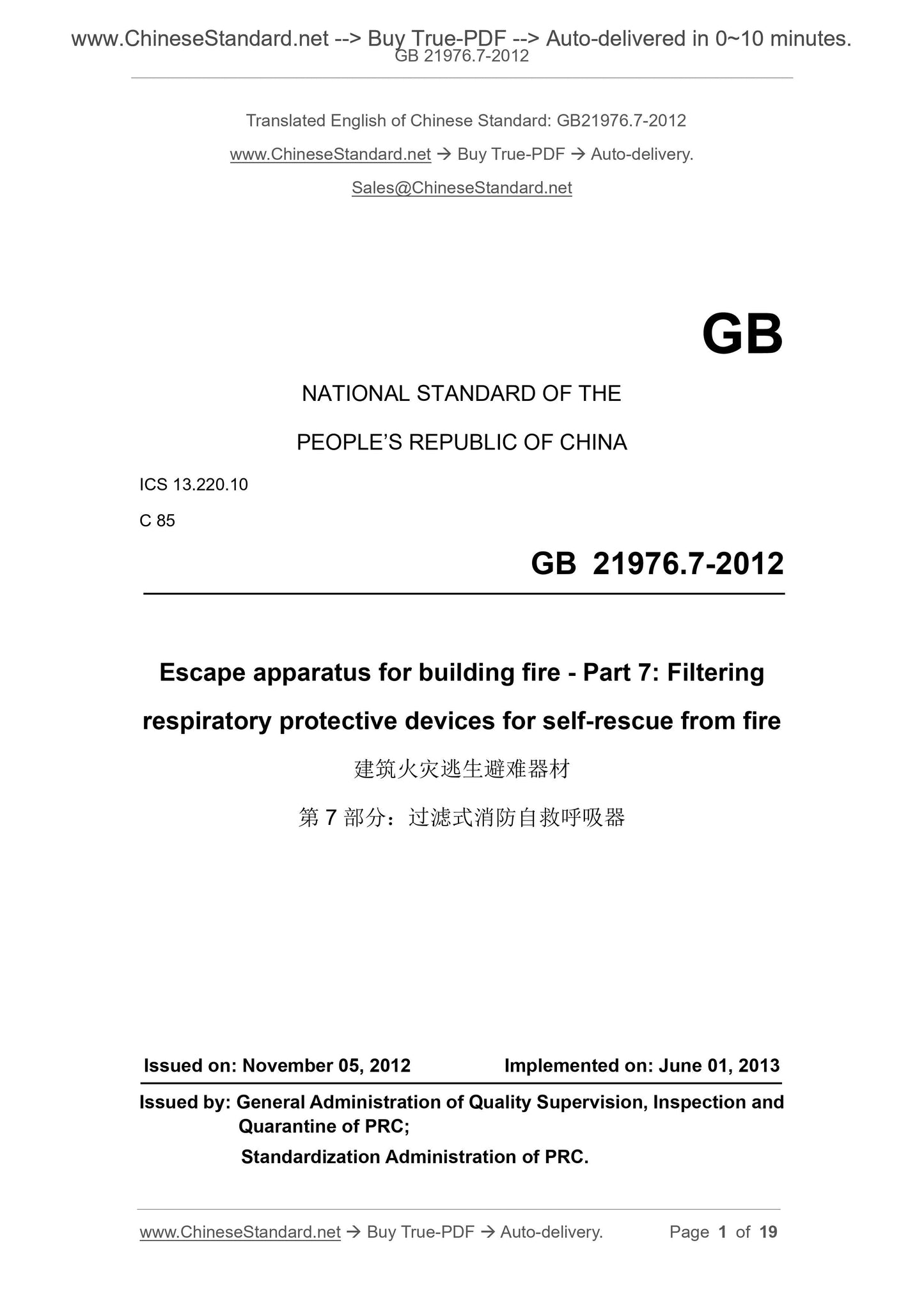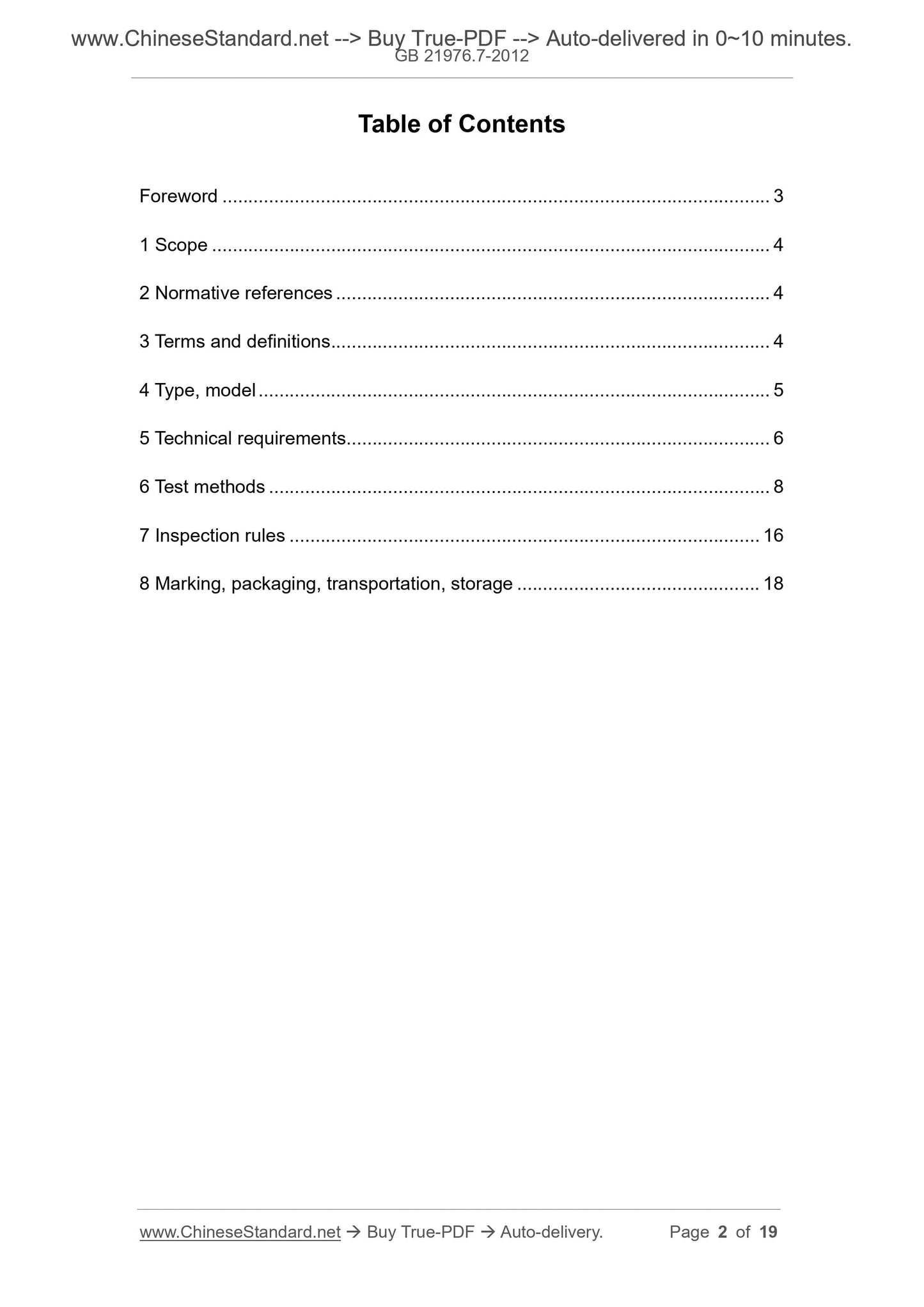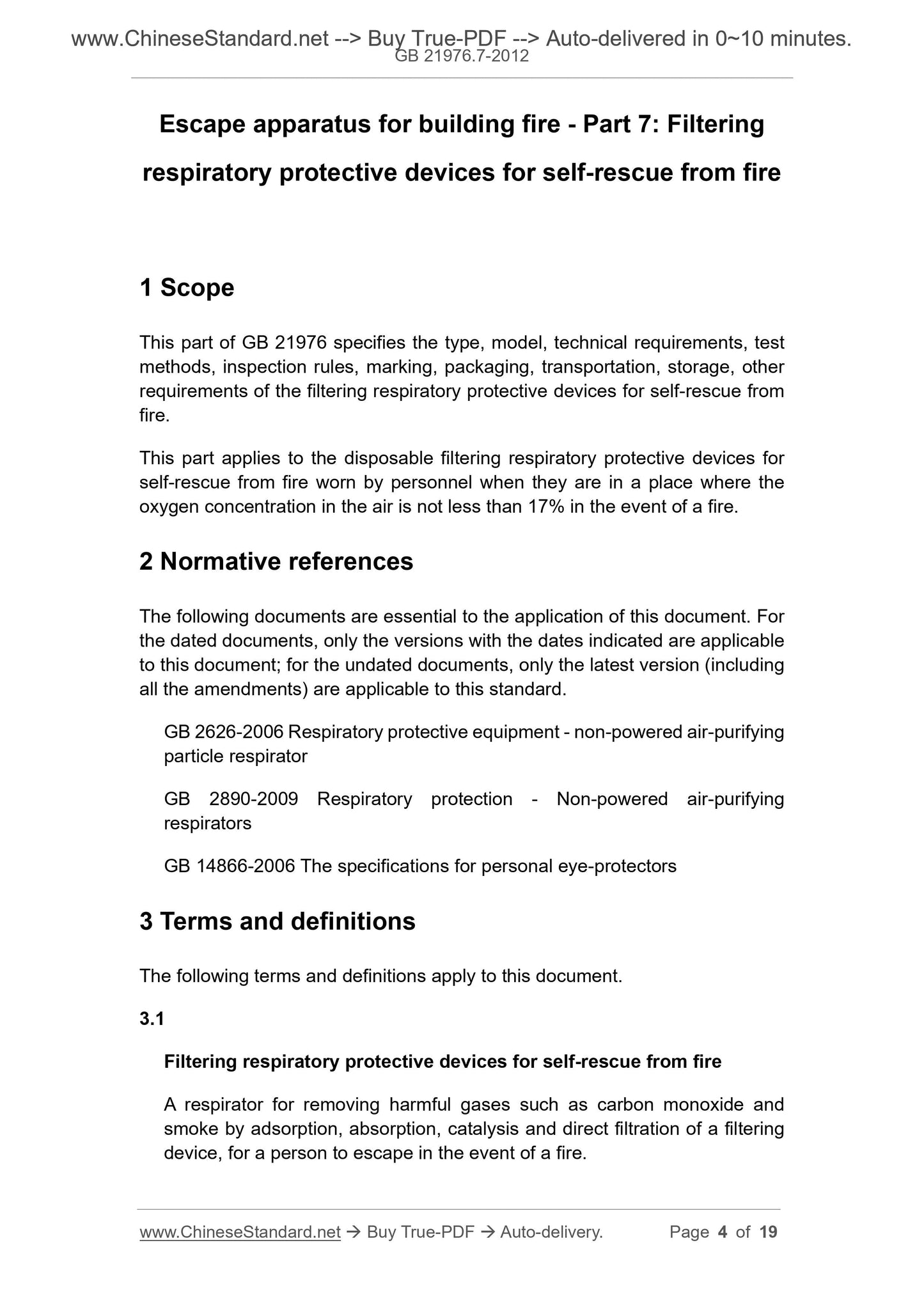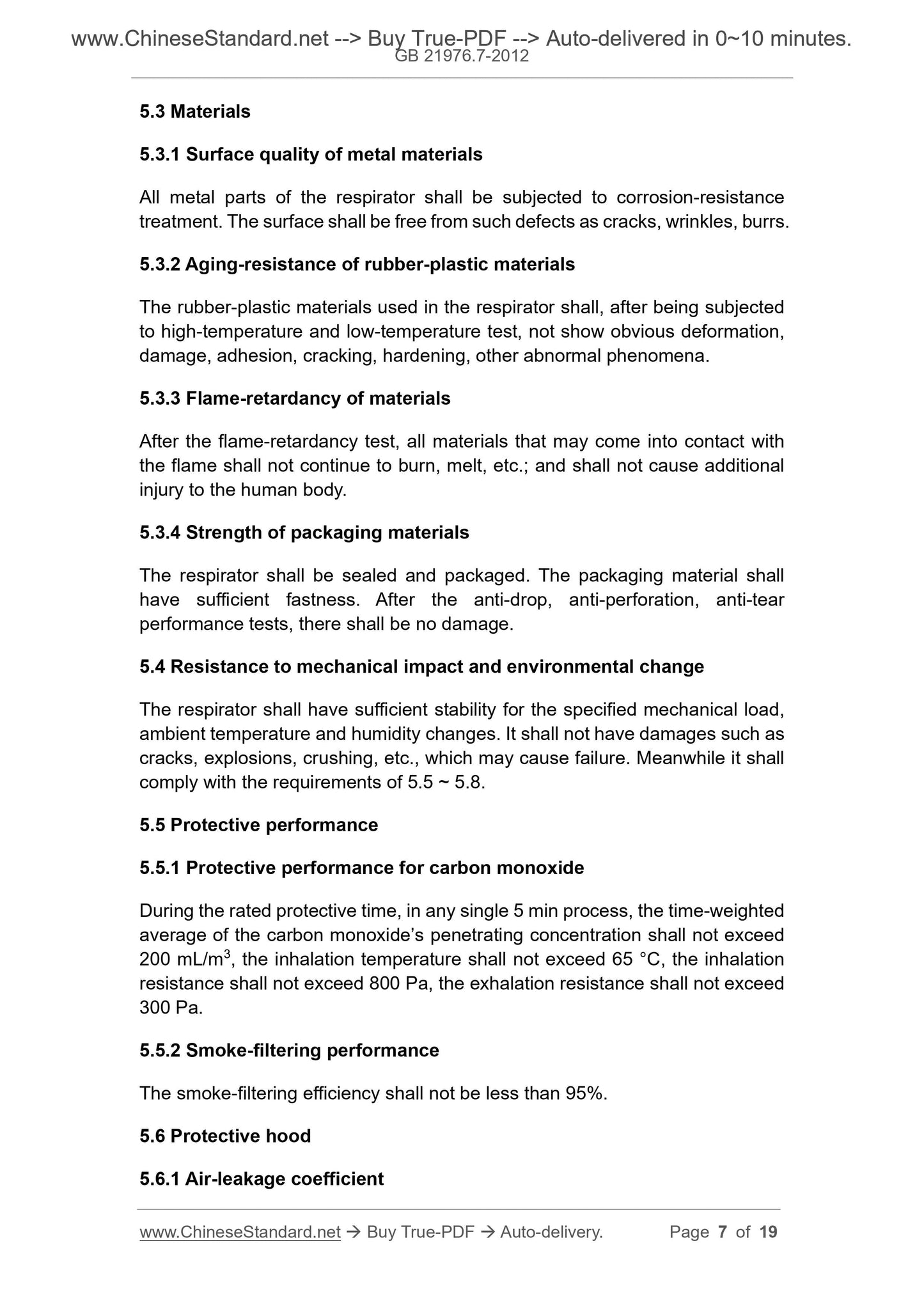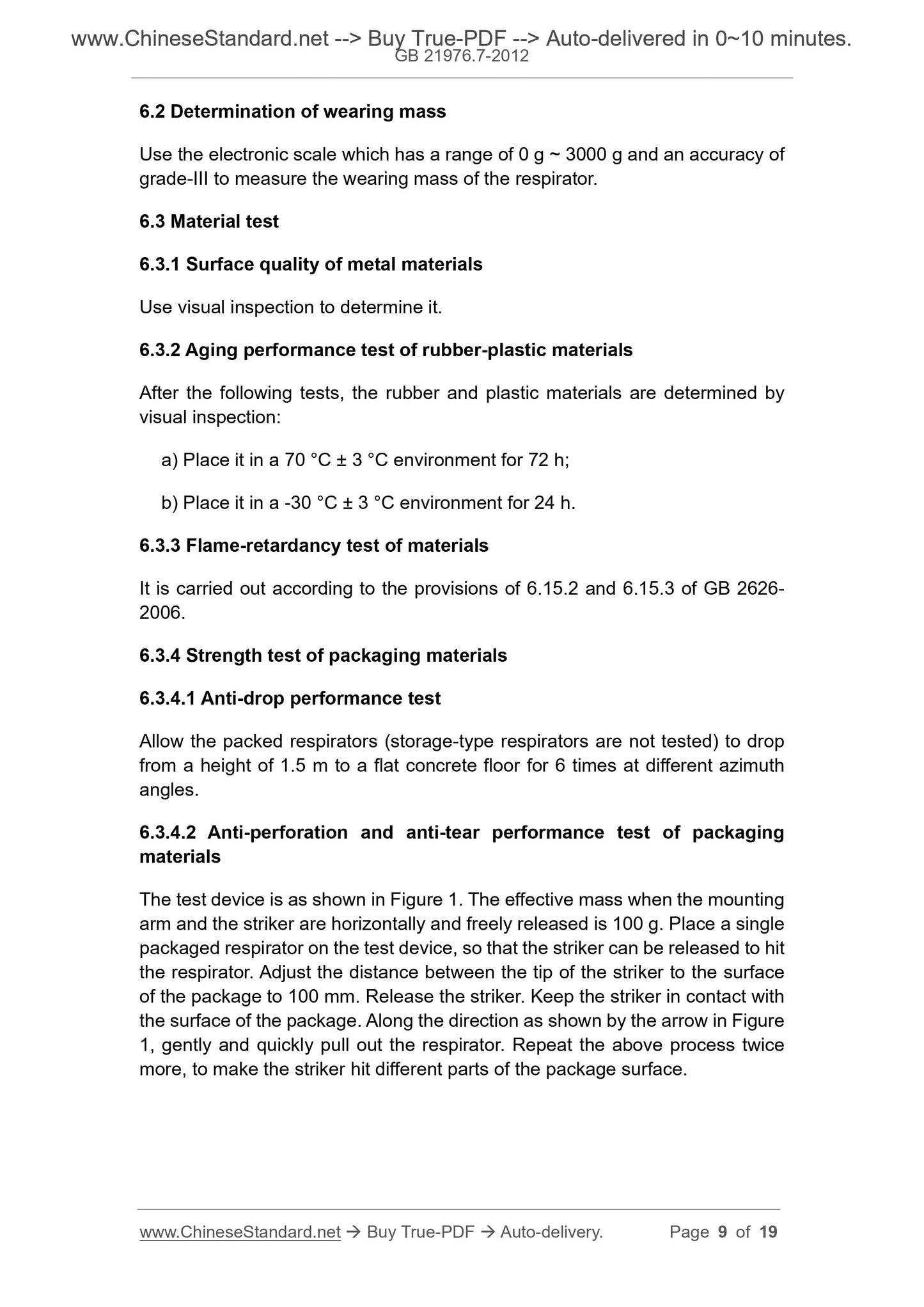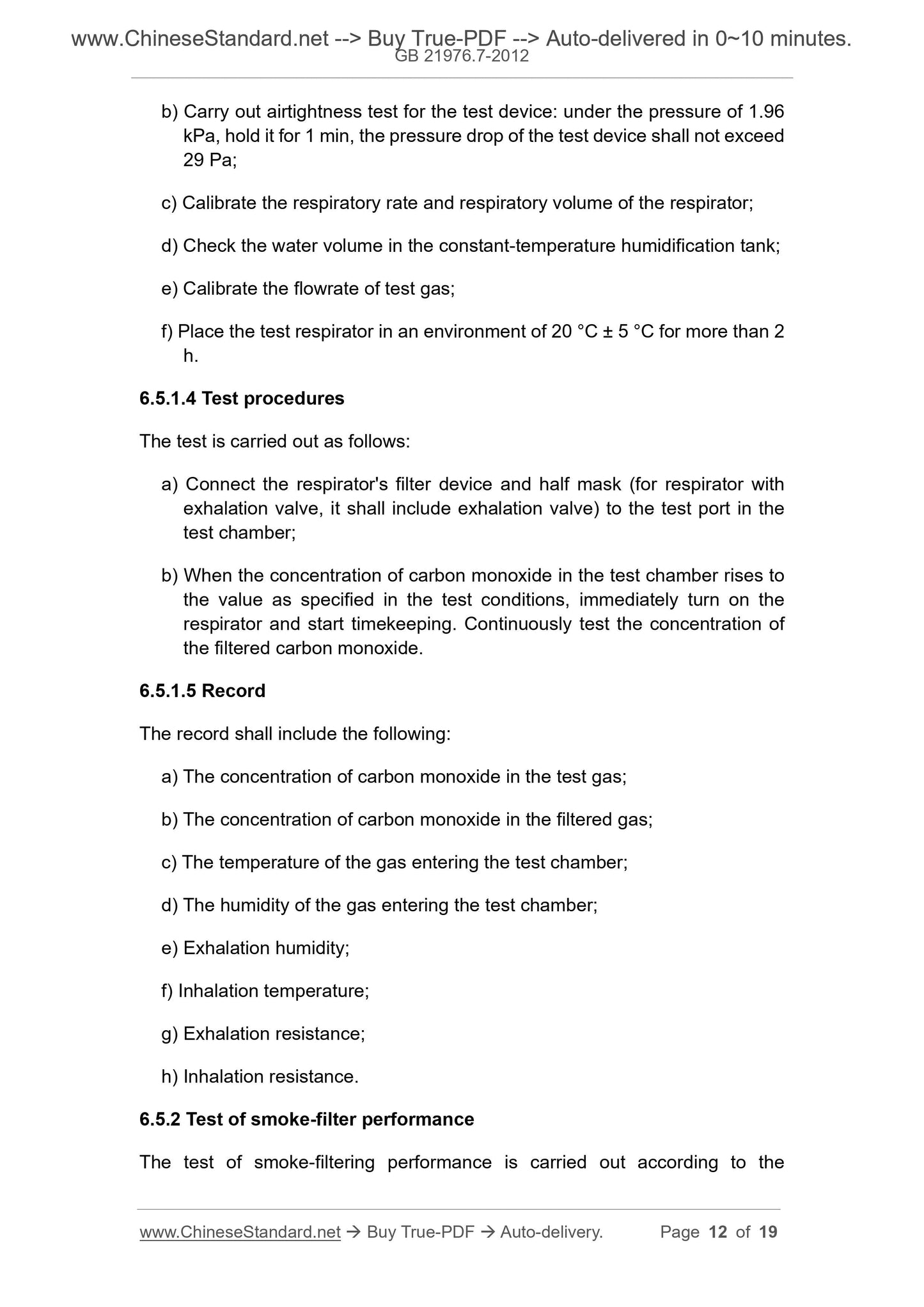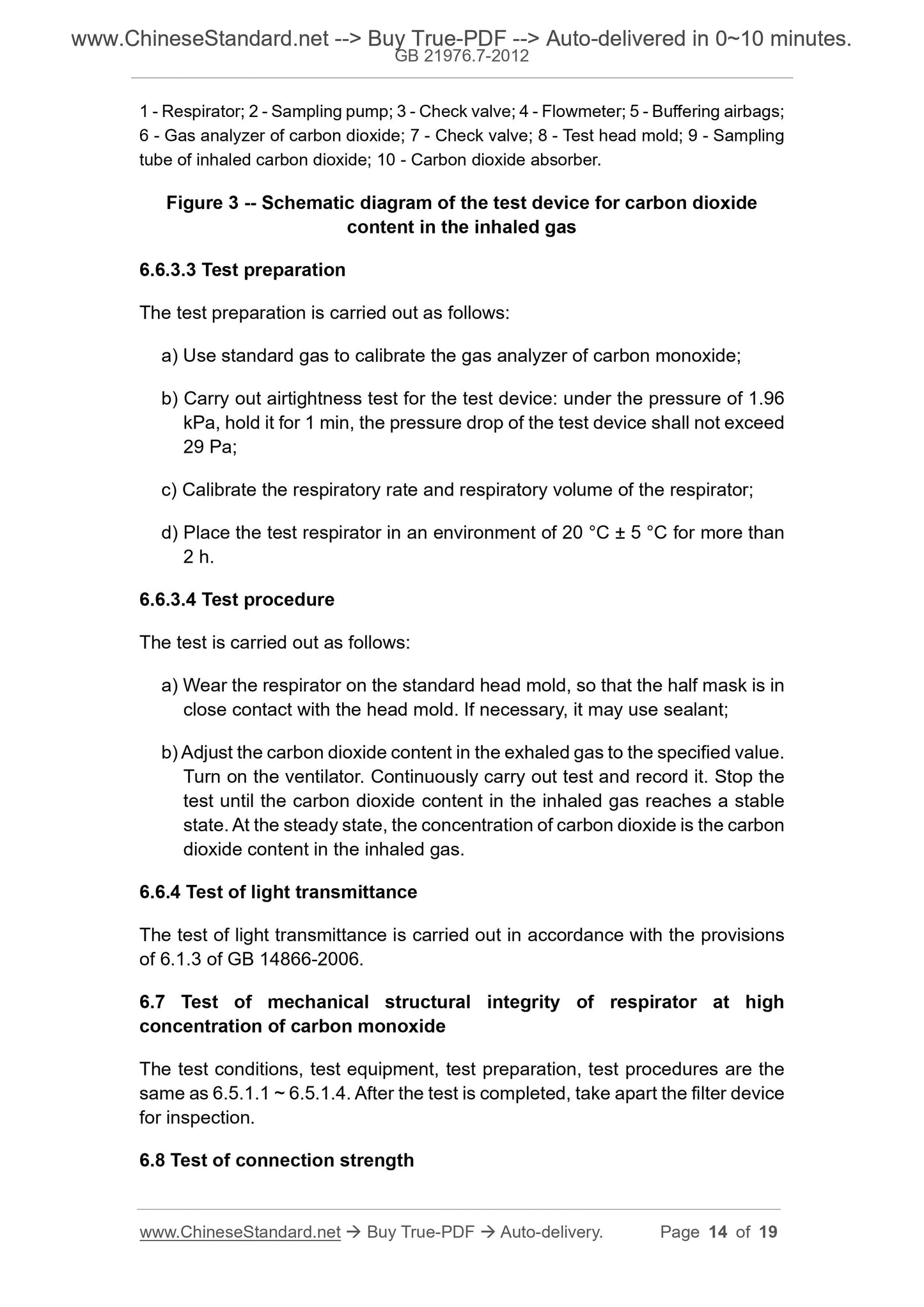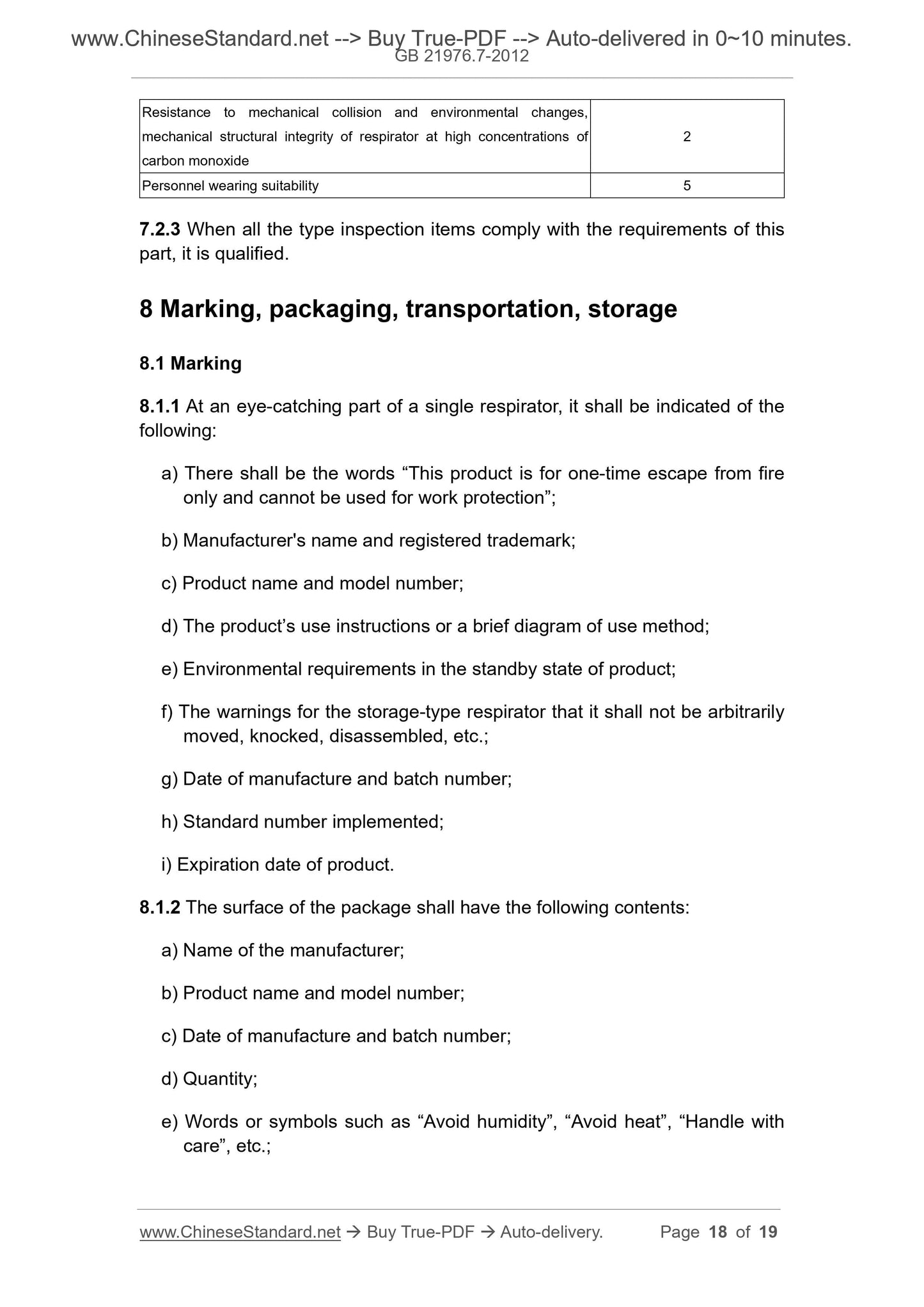1
/
of
8
www.ChineseStandard.us -- Field Test Asia Pte. Ltd.
GB 21976.7-2012 English PDF
GB 21976.7-2012 English PDF
Regular price
$150.00
Regular price
Sale price
$150.00
Unit price
/
per
Shipping calculated at checkout.
Couldn't load pickup availability
GB 21976.7-2012: Escape apparatus for building fire - Part 7: Filtering respiratory protective devices for self-rescue from fire
Delivery: 9 seconds. Download (and Email) true-PDF + Invoice.Get Quotation: Click GB 21976.7-2012 (Self-service in 1-minute)
Newer / historical versions: GB 21976.7-2012
Preview True-PDF
Scope
This part of GB 21976 specifies the type, model, technical requirements, testmethods, inspection rules, marking, packaging, transportation, storage, other
requirements of the filtering respiratory protective devices for self-rescue from
fire.
This part applies to the disposable filtering respiratory protective devices for
self-rescue from fire worn by personnel when they are in a place where the
oxygen concentration in the air is not less than 17% in the event of a fire.
Basic Data
| Standard ID | GB 21976.7-2012 (GB21976.7-2012) |
| Description (Translated English) | Escape apparatus for building fire - Part 7: Filtering respiratory protective devices for self-rescue from fire |
| Sector / Industry | National Standard |
| Classification of Chinese Standard | C85 |
| Classification of International Standard | 13.220.10 |
| Word Count Estimation | 16,137 |
| Quoted Standard | GB 2626-2006; GB 2890-2009; GB 14866-2006 |
| Regulation (derived from) | National Standards Bulletin 2012 No. 28 " building fire escape evacuation equipment " series of national standards released |
| Issuing agency(ies) | General Administration of Quality Supervision, Inspection and Quarantine of the People's Republic of China, Standardization Administration of the People's Republic of China |
| Summary | This Chinese standard specifies the filter type self contained breathing apparatus for fire type, model, technical requirements, test methods, inspection rules, marking, packaging, transportation, storage and other requirements. This standard applies to t |
Share
